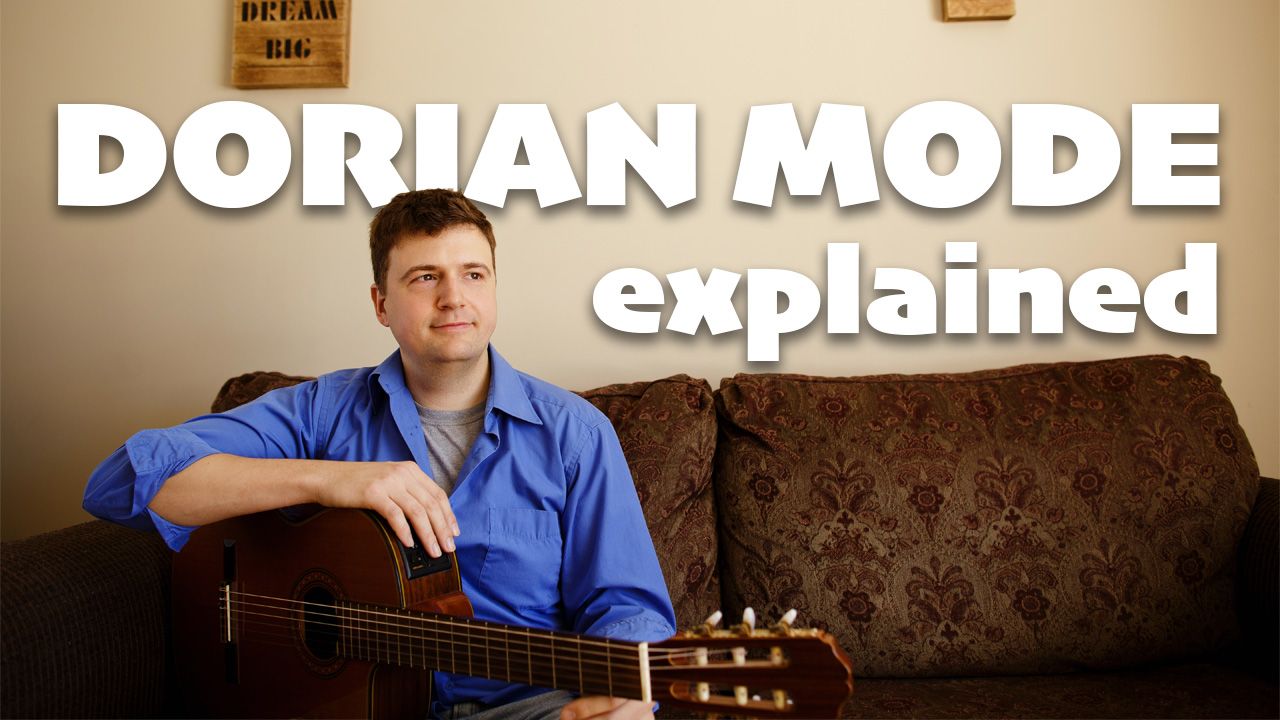Learn Jazz Theory Now – Over 25 Free Music Theory Articles
Master Index of Theory-Related Pages Online
What is Jazz Harmony?
Jazz harmony is defined as the theory behind jazz chords and the practice of how jazz chords are put to use in the context of jazz music. Since American jazz music resembles, in analysis, other practices of Western harmony (i.e. classical music), jazz harmony and theory relies heavily on similar concepts (such as scales) as the foundation of chord construction.
The way it’s going to be presented on this website, jazz theory is like popping up the hood and looking at a car’s engine. You’ll understand why you’re allowed to speed up, slow down, make wide or sudden turns, and so on. In brief, music theory is how we organize the sounds we have on our instruments into a logical system (that’s the “engine”)…
Welcome to the jazz theory section of JazzGuitarLessons.net … here you’ll be able to satisfy your intellectual cravings for understanding how music works theoretically. You’ll find out about how scales and chords are constructed (and why!) plus many articles addressing a wide range of theory topics such as progressions, modes, chords with alterations, key signatures, cadences, etc.
Word of Caution About Jazz Theory
Before you start reading the pages and articles below and learn jazz theory, I believe it’s important for you to understand this: jazz theory, as much as you can learn from it on a written page, really lies in YOUR EARS.
The systems we use to explain what we’re doing have to be identifiable by sound. That being said, always make sure that what you’re studying, in theory, is understood well and that you can HEAR IT (and I mean away from your instrument).
Now go on, knock yourself out, and read the articles below in order.
Jazz Theory Basics
- The Major ScaleThis is the universal foundation of music. This lesson covers the scale and basic theory. Then you should also see Melodic Minor and Harmonic Minor scales.
- Chord Cycles In Jazz
Find out how chords can be played in specific sequences of parallel motion. You’ll learn about the very important cycle of fourths, of course. Chords can also be cycled by remaining within a key (hence “diatonic”). There are only 7 diatonic cycles to know!
Scale and Modes Construction
That’s a biggie! So here’s your quick guide to sorting it all out:
-
Scale Construction 1 – The FormulaLearn and understand the basic formula to build the major scale (in any key). Includes a “Four-Step Process” to practice your understanding of this jazz theory.
- Scale Construction 2 – Building All the Keys (Signatures)
Each key is unique! Apply the “formula” in a more general way: learn how to use key signatures to immediately SEE in what key a tune is supposed to be played in.
- Scale Construction 4 – Modes From Three Scales: 21 Most Common Modes
See how we can generate 21 completely unique modes by using three very common parent scales. This wraps things up nicely with a link to how CHORDS a built from scratch.
Harmony and Chord Construction
We build chords from the scales covered in the previous section. So make sure you’re familiar with scales before attempting to build chords from them:
- Chord Construction 1 – Basic Triads and Seventh Chords
Never dealt with the music theory of chords before? No problem! Start here to build common triads and 7ths …
- Chord Construction 2 – Intro to Extensions
Two nice “tricks” for jazz guitarists to create 9th, 11th, and 13th chords from common chord grips.
- Chord Construction 3 – Equivalents
In this article, you’ll get to understand exactly WHY some chords are completely interchangeable. You’ll realize you already know more chords than you thought… - Chord Construction 4 – Diatonic Chords From Three Scales
We’ll find all the chords that “live” within our three most common scales: major, melodic minor, and harmonic minor. - Addendum: The “Chord Extensions Finder” Technique
This nice little technique lets you know exactly which extensions are available on what chords. It’s a simple, effective, AND systematic approach to discovering “the right” extensions on jazz chords.
Chord Progressions Basics
- Blues Progressions Explained Five important blues progressions with theoretical explanations. PDF to download and print in 3 keys!
After understanding blues stuff, it’s important to get accustomed to “how chords move to on another”, here’s the guide:
- Intro to Chord Progressions #1
The basics of understanding how chords go with one another. Covers the diatonic cycle and the I-VI-II-V progression. Great starting points.
- Intro to Chord Progressions #2
Modulations: how to get to other keys. Let’s start by modulating to the almighty IV chord… (heard in many standards and within the blues progressions, to most important modulation)
- Intro to Chord Progressions #3
Minor Progressions. The final chapter in this jazzy chord progressions survey. The minor diatonic cycle, I-VI-II-V in minor and minor blues progressions.
-
Chord Substitutions: Survival GuideAn introduction to how jazz chords can be interchanged in different contexts. Find out about the infamous “tritone sub”!
The Ultimate No Nonsense Series
If you already know some stuff about chords, then the “No-Nonsense Guides” are a great way to get into free jazz guitar theory without being overwhelmed with too many notes, scales, modes, etc. In fact, it’s some sort of simplification of some of the theory’s intermediate concepts. (Not completely for beginners, yet not too advanced).
- The No Nonsense Guide to Jazz Harmony – Part 1
“What is an II-V-I and how does it work?” Theory with practical applications on the fingerboard (printable exercises in PDF).
- The No Nonsense Guide – Part 2
Some more clarifications on harmony. Practical suggestions to understand and play secondary dominants, interpolation, back cycling, turnarounds (and more…)
- The No Nonsense Guide – Part 3
The final article in the “no-nonsense series”. Covers more advanced topics and defines harmonic concepts such as tags, back door progressions, extension, inversions, and more…
The “Playing on Dominants” Series
Last but not least, how to play on dom7 chords … from the most basic mixolydian all the way to very complex altered sounds:
-
Dominant Chords: An IntroductionAn introduction to the reason behind the dominant chords: they’re the engine of harmony! Start with the tritone and understand everything that happens with those little monsters.
- Dominants Part 1 – The Basic Sound of Mixolydian
That’s the “mode” of the major scale where you find the plainest dom 7th sound of all… the mixolydian scale.
- Dominants Part 2 – One Alteration (Mixo b13)
This is the sound of the “dominant of melodic minor”. One simple shift in the Mixolydian scale and you’re set.
- Dominants Part 3 – One Alteration (Mixo #11)
Ever heard played Thelonious Monk tunes or “Blue Seven” by Sonny Rollins? Then you’ve encountered this Dom7(#11) …
- Dominants Part 4 – Common “Dom7th (b9, b13)” Sound
The dominant that originates from the harmonic minor scale. VERY common in jazz improvisation from the bebop era and on.
- Dominants Part 5 – Sounds from Altered (aka Super Locrian)
The “crunchy crunch crunch” dominant scale that has multiple implications (even tritone subs, yes.)
More Advanced Jazz Theory Stuff Here …
- How to Improvise on the Minor II-V’s Mini-GuideDwell on this progression and find out what the “best solution” is regarding chords/scales relationship … then apply to your improvisations on minor II-V-I’s
Lessons from the blog!












